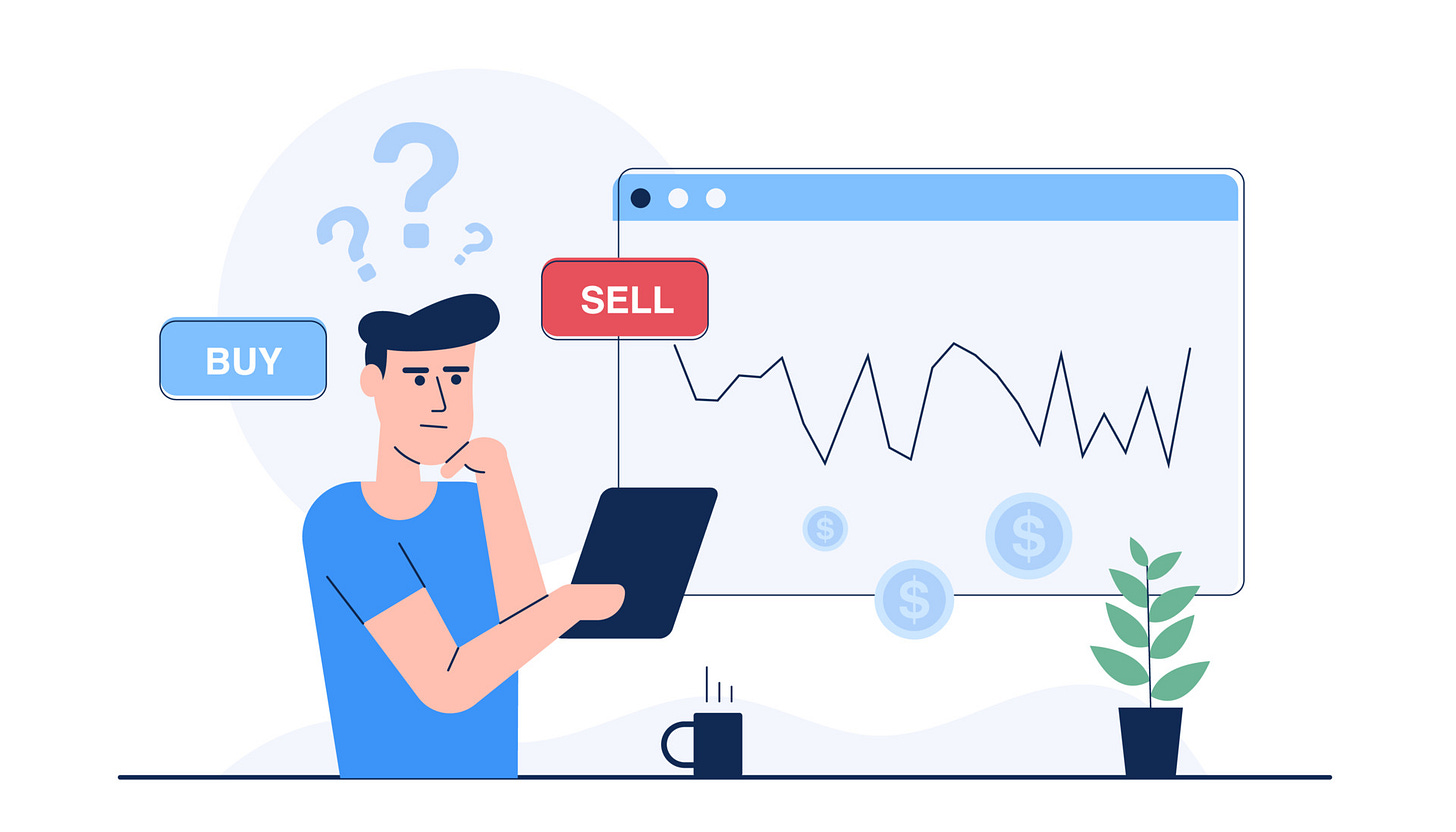What do we know about consensus? It’s usually wrong.
Currently, market pundits can be split into one of two schools of thought:
The market is already broken and once the lag effect of recent rate hikes comes into play we’re going to fall into a terrible recession – possibly even a global depression, OR,
The Fed has somewhat pulled off a soft landing, markets are stabilizing, and at the first sign of turbulence they will begin a cutting cycle which will revive the most excessive bull market of all time.
Since these hypotheses appear to be on opposite ends of the spectrum of possible outcomes, what is the contrarian bet? Enter Brent Johnson’s “violently sideways” theory.
Brent, founder of Santiago Capital, was also the pontificator of the “dollar milkshake” theory during 2022 when rate hikes began. This theory, which predicted dollar strength, was ostracized and outright dismissed by many at the time as dollar destruction was consensus at the time. However, a year later, this theory has provided us with the most accurate framework to qualify the behavior of the currency market since. In essence, the theory suggests that the dollar is the cleanest of all the dirty shirts and when other currencies are being impacted negatively there is demand for dollars.
Violently sideways is not just a prediction for currency markets, rather the market as a whole. This theory suggests we will experience a great deal of market turbulence with violent swings up and back down without a material net change. We’ve seen examples of this already where correlations that are typically considered fundamental appear to be breaking down and pulling violently in opposite directions – looking at precious metals, the dollar, T bills and equities we can see these examples. This behavior would suggest the market is very unclear making it difficult to navigate for even the most seasoned traders as they’re getting contradictory signals.
So where can we put capital to work in a violently sideways market that will actually net us some benefit? I’ve got some ideas for this:
Cash.
Having some cash on the sidelines to deploy IF the market does take a dive could be very favorable to those with the patience to do so. Markets are still historically overbought and there is a fair amount of evidence that would suggest things are sooner to break to the downside before we see the next parabolic leg up. However, markets have become increasingly more irrational in recent years and I would not be surprised to see an irresponsible move up – I would also hate to be completely on the sidelines for such a move and then feel compelled to buy back in when things are even more overbought; that would be a hard choice to make.
Commodities.
Commodities have been under-invested for over a decade. The longer these equities have stayed depressed, the more pent up potential upside exists within this sector. Commodity cycles are typically inversely offset by speculative fever (which we’ve seen plenty of in recent years), this would further suggest they are due for a day in the sun. If, however, the market does flip decidedly bullish again, we will still require these commodities to supply producers with what they need to grow. Since it has been so underfunded, market capitalization of this space has plenty of room to grow. If the market takes a dive, the commodity sector could be seen as a flight to safety for their inverse correlation. I like uranium, lithium (if you can stomach the volatility), rare earth metals and copper.
The violent barbell approach.
We know the barbell approach – a mix of high risk and low risk assets – but I’ve got two specific classes that I’m deploying to. Precious metals and crypto. Precious metals will retain value if the market takes a hit or if geopolitical circumstances escalate/climax - basically if things change for the worse, you’ll be stable in gold. If the market does improve substantially, it likely means the money printer has had something to do with it. If that is the case, we can expect moderate inflation – an environment also favorable for gold.
Crypto, on the other hand, moves like an extremely leveraged liquidity play. Thus, if there is some form of monetary stimulation required to bring the economy back to speed, crypto will outpace any gains in the growth/tech sector. We have yet to retrieve a data point that confirms crypto as the defensive asset it was designed to be, but there is still hope that this decoupling may yet occur - I am not holding my breath in that regard.
DeFi.
This, I believe, is my most high risk allocation but it’s just way too profitable from an income generation standpoint to ignore. DeFi liquidity pools may be found to function similarly to dividend stocks in a downturn - if liquidity dries up the yields could go through the roof. I’m net ~60% APR with my DeFi allocation, I can’t imagine what that would look like if I was the only one left providing liquidity to these protocols (because let’s face it, crypto isn’t going anywhere over the long term)
Assets with no correlation to the overall market.
I’m looking at one type of asset for this: Gaming. Particularly crypto/NFT gaming. The (mostly unwarranted) NFT art market fever has cooled off, but the function of NFTs remains of high potential, especially for gaming.
The mega, open world online games that we all wish we could have invested in over the last few decades have all created their own, in-game economies. With the power of blockchain and NFTs, in-game economies are set to pivot towards real, scarce and functional economies. Let me explain something: there are people who get SERIOUS about their gaming, and they do so under any economic conditions. Gaming might even perform better during periods of economic turndown (for obvious reasons). When you mix in the scarcity of in-game assets with functional in-game financial infrastructure, we are looking at a development that could be the biggest thing to happen to the monstrous market since the integration of the internet and online gaming. This development could allow users to turn gaming into a full time job, where they can extract assets with real value out of digital worlds. The reason this is likely: because massive incentive exists to do so - how many kids want to make gaming their job? Many.
My favorite crypto gaming project is relatively undiscovered, is backstopped by regulation in the Netherlands, uses NFTs and crypto as a critical and functional element of the game, has a compelling storyline and is utilizing Unreal Engine 5 to create visually stunning gameplay - It’s an extraction/looter called Chains of War and I’m thrilled to consider myself an early investor. I don’t think people yet fully grasp the entertainment value of trying to escape a digital world with scarce assets that have value both within the game and the real world… and I’m almost certain this will soon become a decade defining trend. Tying this back to my DeFi allocation, Chains of War currently has a liquidity pool on Minswap that is yielding ~65% APR – paid out in MIRA (the game token). Disclaimer: I have allocated to this liquidity pool, so please don’t ape in and dilute me down too much.
Allocating to all of these instruments mentioned above would be a relatively uncorrelated and well-diversified set. Of course, none of this is financial advice and you should do your own research – this is just how I’m researching and positioning for the (potential) violently sideways future and I believe a strong case can be made for these allocations.
Stay blessed.
Please note: Any perceived or implied advice or guidance contained within this article, financial or otherwise, should not be considered as professional advice. Do not follow the strategies described without consulting a professional financial advisor and familiarizing yourself with the legal and tax implications of these strategies for your region.






